Comparing chickpeas and peas: what are the differences and what are the similarities?
Among those who care about their health, products that are not quite traditional for our country are gaining popularity. The demand for them is largely due to skillful advertising. For example, chickpeas are presented as a better alternative to the familiar peas. Is it so? We'll tell you What is the difference between chickpeas and regular peas? and how they are used in cooking and folk medicine.
What are chickpeas and peas
Chickpeas and peas are legumes. What is the difference between them? The seeds of these plants are eaten. Chickpeas are also called Turkish, Uzbek, Volozhsk and lamb peas, bladderwrack, shish and nokhat.
Chickpeas are nuts or peas
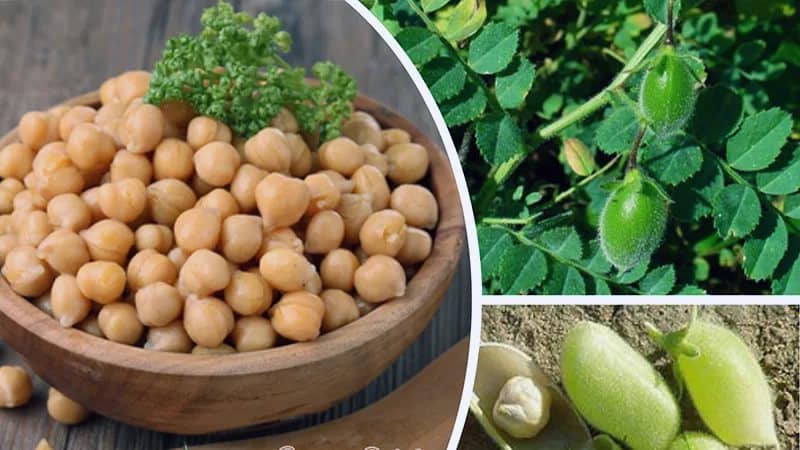
From a botanical point of view, chickpeas cannot be considered a nut, since they do not have a woody pericarp.
Both crops belong to different genera of the same family, so calling chickpeas peas is also incorrect.
Reference. Peanuts are another legume plant that is also not a nut.
How are they different?
The closely related relationships of the two plants often lead to products being confused. However, upon careful examination, characteristic differences between chickpeas and peas.
Differences in appearance, taste, aroma
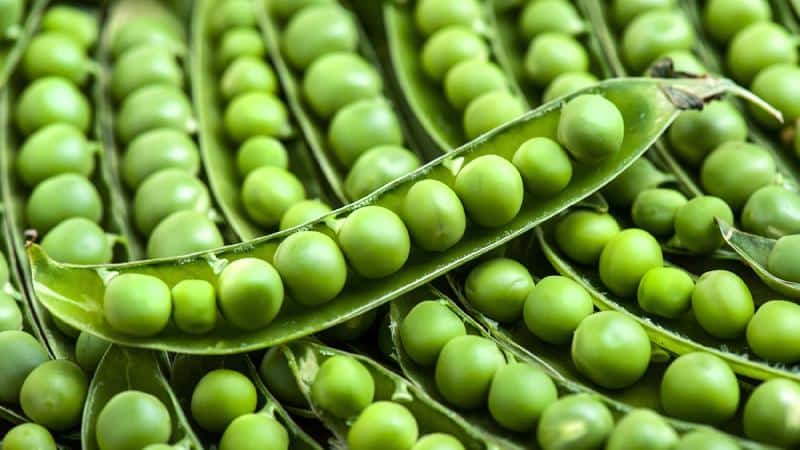
Both legumes are herbaceous plants, but chickpeas have an erect stem, while peas have a climbing stem. The ripe fruit - the bean - in chickpeas is shorter, swollen, and contains from 1 to 4 large seeds with a diameter of up to 10 mm. These seeds have a characteristic shape, which is compared to a ram's head, yellow or dark color, and a rough surface.The pea bean is oblong, the seeds are smooth, usually spherical or slightly angular, green.
Due to their heat-loving nature (beans are formed at a temperature of +24...+28°C), chickpeas gravitate towards regions with a hot climate - Central Asia, India, East Africa, and the Mediterranean. Peas grow well in temperate latitudes.
Gourmets note a pleasant nutty hue in the aftertaste of chickpeas and its buttery-velvety structure. The taste of peas is more delicate, especially when fresh.
In characteristics, composition, KBZHU
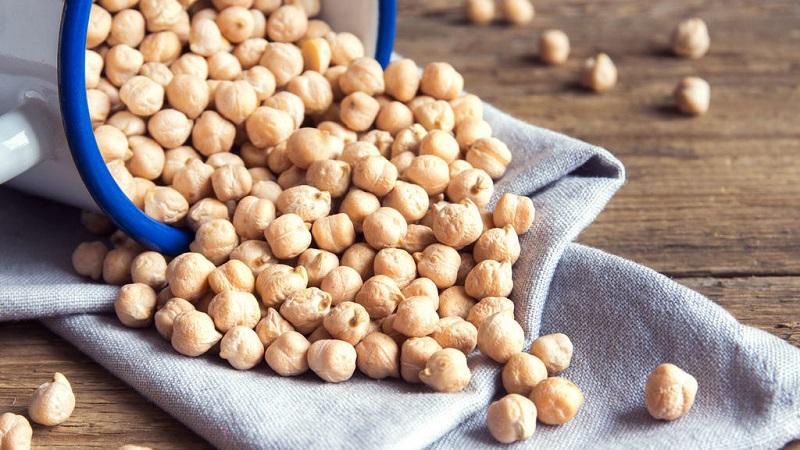
Comparison of energy and nutritional value of chickpeas and peas (dry) is given in the table.
| Characteristics | Chickpeas | Peas |
| Calorie content, kcal | 378 | 298 |
| Proteins, g | 20,5 | 20,5 |
| Fats, g | 6 | 2 |
| Carbohydrates, g | 50,7 | 49,5 |
| Dietary fiber, g | 12,2 | 11,2 |
| Glycemic index | 28 | 25 |
Chickpeas are high in B2, B6, B9, C, E, K (phylloquinone). However, peas have more B1, B4, B5, PP and H (biotin).
100 g of dry whole peas contains:
- almost 3 daily norms of silicon;
- 75% of the daily requirement of copper;
- 41% – phosphorus;
- 38% – iron;
- 35% – potassium;
- 27% – magnesium;
- 26.5% – zinc.
Mineral set contains chickpeas is ahead of peas only in the amount of manganese (10 times the daily requirement in just 100 g of product), and also contains less sodium, which is good for patients with hypertension. Compared to peas, chickpeas are richer in saturated and polyunsaturated fatty acids, in particular omega-6 (56% of the daily value).
In benefit and harm
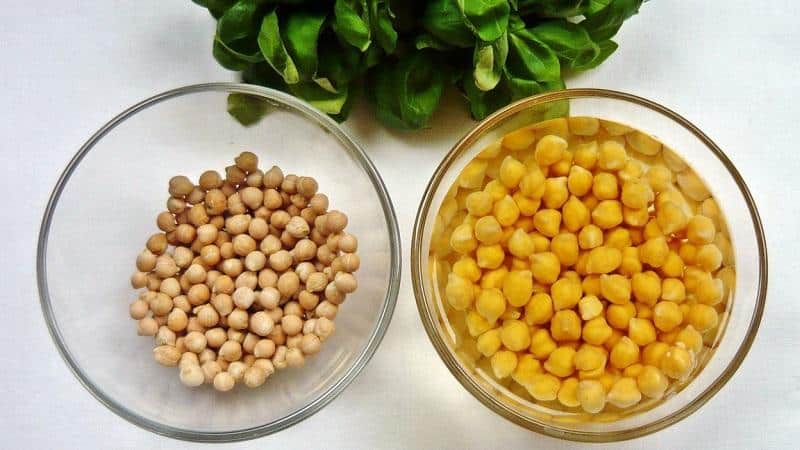
Chickpeas are higher in calories than peas, contain more fat and dietary fiber, and therefore provide a long-lasting feeling of fullness.. Thus, the product helps to gain muscle mass without increasing fat deposits, which makes it indispensable in sports nutrition.
Low sodium is a strong argument for its inclusion in the diet of people suffering from hypertension.Manganese in the plant helps prevent diseases of the cardiovascular system, is necessary for the absorption of vitamins B, C and E, and is responsible for the health of the human nervous system. This is also an excellent product for diabetics - beans contain only 10.7 g of digestible carbohydrates, so even when cooked, they do not lead to a sharp jump in blood sugar.
All legumes cause severe gas formation, but peas are especially prone to this. Oligosaccharides are poorly soluble in gastric juice and cause fermentation.
Reference. To avoid flatulence, the dry product is soaked in cold water before cooking. Reduces bloating by adding mint, dill or turmeric to the finished dish.
In cooking methods and times
Chickpeas have hard grains, so they require longer heat treatment:
- Pre-boiling will take 40 minutes before frying,
- 1 hour – until soft,
- 2 hours – until pureed.
The chickpeas are soaked in cold water. If this is not done, cooking will take about 4 hours.
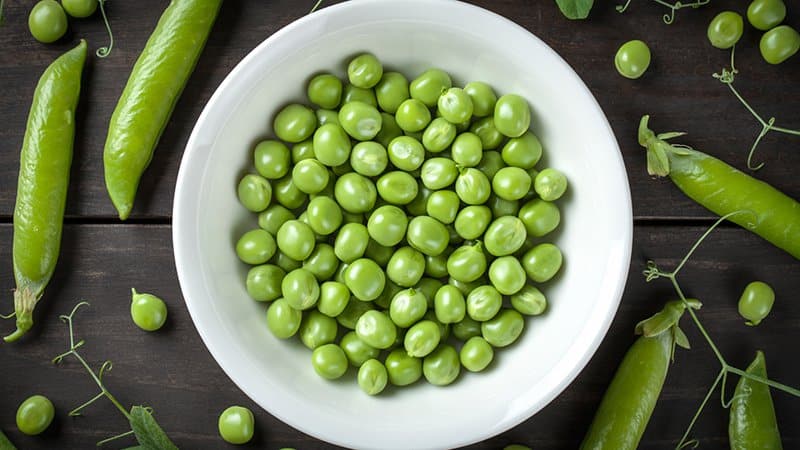
What common
Chickpeas and peas belong to the same botanical family and have a number of similar characteristics, for example, the structure of the vegetative part of the plant - leaves, flowers, seed box.
Both products have high nutritional value and are used in lenten and vegetarian menus as an alternative to meat. They have a positive effect on glucose levels, as they contain enzymes that help lower sugar levels.
Both peas and chickpeas have a diuretic effect, but are contraindicated for nephritis, urolithiasis, thrombophilia and gout.
Which is healthier?
It is impossible to say unequivocally about the benefits of a particular product, since individual reactions of the body are possible. Chickpeas have a slightly higher nutritional value, but the mineral composition of peas is more varied and rich.
When compiling a diet, the regional and price aspects are taken into account: peas are more common in Russia and, accordingly, cost less than chickpeas. Therefore, chasing an exotic product is not always rational. However, chickpeas are just right for diversifying your diet and expanding your gastronomic horizons.
The use of chickpeas and peas in cooking
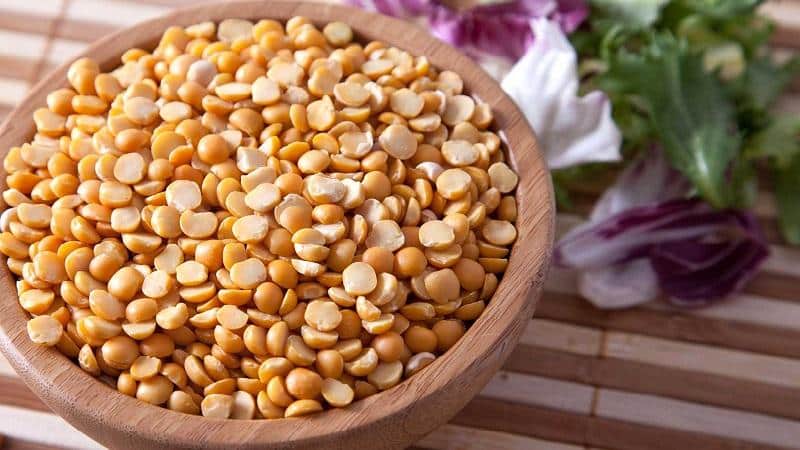
Chickpeas are common in Middle Eastern and Indian cuisine and are used in the following traditional dishes:
- hummus – a homogeneous paste of boiled beans, which is spread on bread or served as a sauce for fresh vegetables;
- falafel – deep-fried chickpea puree balls;
- lebleli – a crispy delicacy made from dry chickpeas fried in a dry frying pan, can be fresh, spicy or candied;
- farinata – Italian unleavened flatbread made from chickpea flour;
- chana chole and chana masala – Indian dishes of stewed beans with spices and vegetables.
Raw food diets use sprouted chickpeas - this way it retains maximum beneficial properties.
Peas have become more widespread in world cooking. It is eaten fresh, canned, boiled, stewed and fried. The most popular dishes - pea soup and stew - have been known since antiquity. In Rus', peas were used to make porridge, jelly, and used as a filling for pies.
In folk medicine
Folk wisdom is inventive in treatment, and almost any plant is used in the treatment of many diseases. Beans were no exception.
Medicinal properties of peas:
- a decoction of young shoots prevents the formation of kidney stones and helps eliminate excess salts;
- a mixture of pea flour and raw chicken protein is used as an external remedy in the treatment of eczema, erysipelas and other skin diseases;
- to get rid of boils and carbuncles, a poultice of crushed pea grains is applied to the affected area;
- 1 tsp. pea flour on an empty stomach - a remedy for the prevention of migraines, constipation and high cholesterol;
- Pea flour is added to homemade cosmetic masks for oily and problem skin, and bean puree moisturizes and nourishes dry skin.
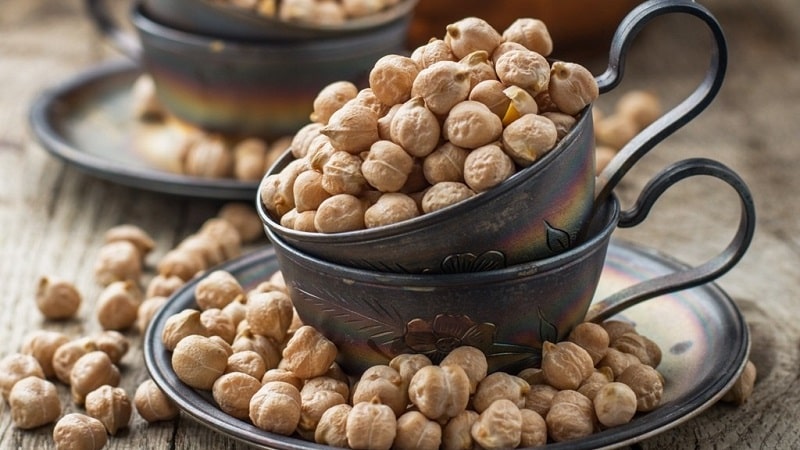
Medicinal properties of chickpeas:
- to cleanse the body for a week, consume a glass of soaked and pureed beans every day, divided into small portions;
- warm chickpea soup relieves coughs, and in combination with radish oil, celery and grated almonds prevents urolithiasis;
- Bean decoction is used for poisoning and constipation;
- To maintain youthful skin and relieve inflammation, use a cosmetic mask: a glass of chickpeas soaked for 12 hours is pureed, mixed with 1 tbsp. l. vegetable oil and 1 tbsp. l. honey (wash off the mask with the water remaining after soaking the beans).
Conclusion
Chickpeas are tasty and nutritious beans native to the Middle East, but they do not have any particular competitive advantage over regular field peas. The vitamin and mineral composition of these products is similar, as is the effect they have on the human body.